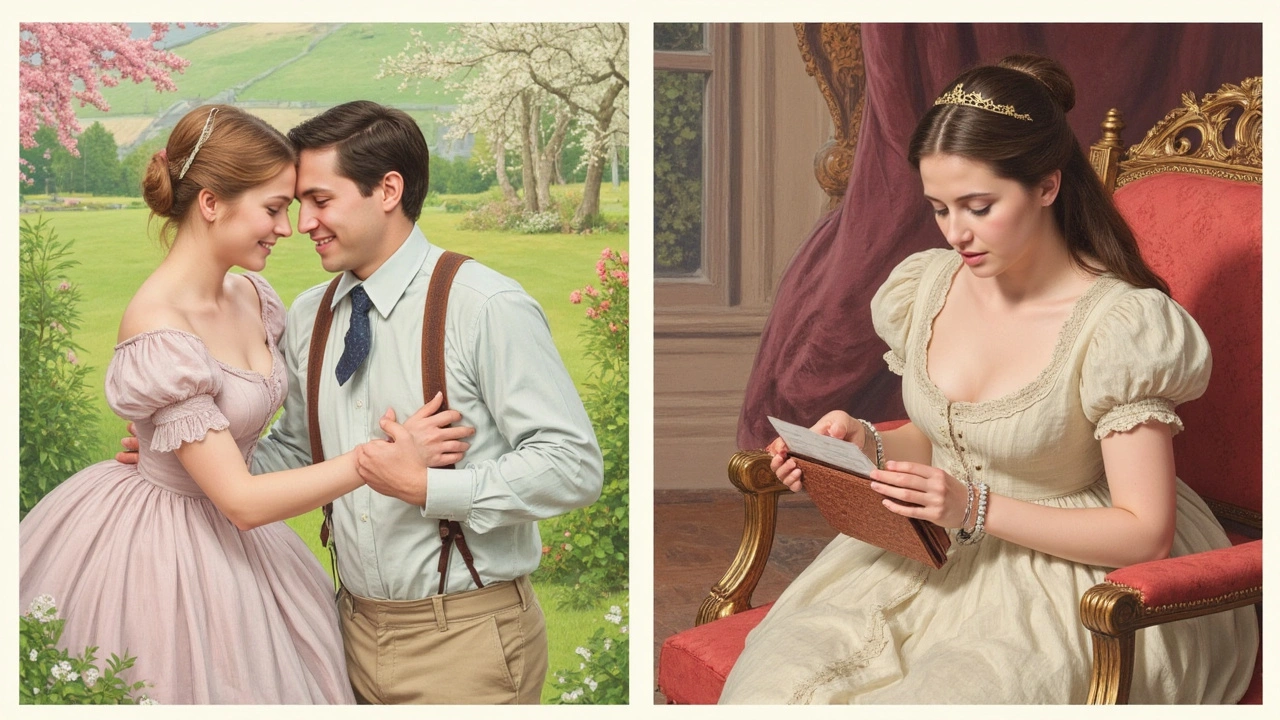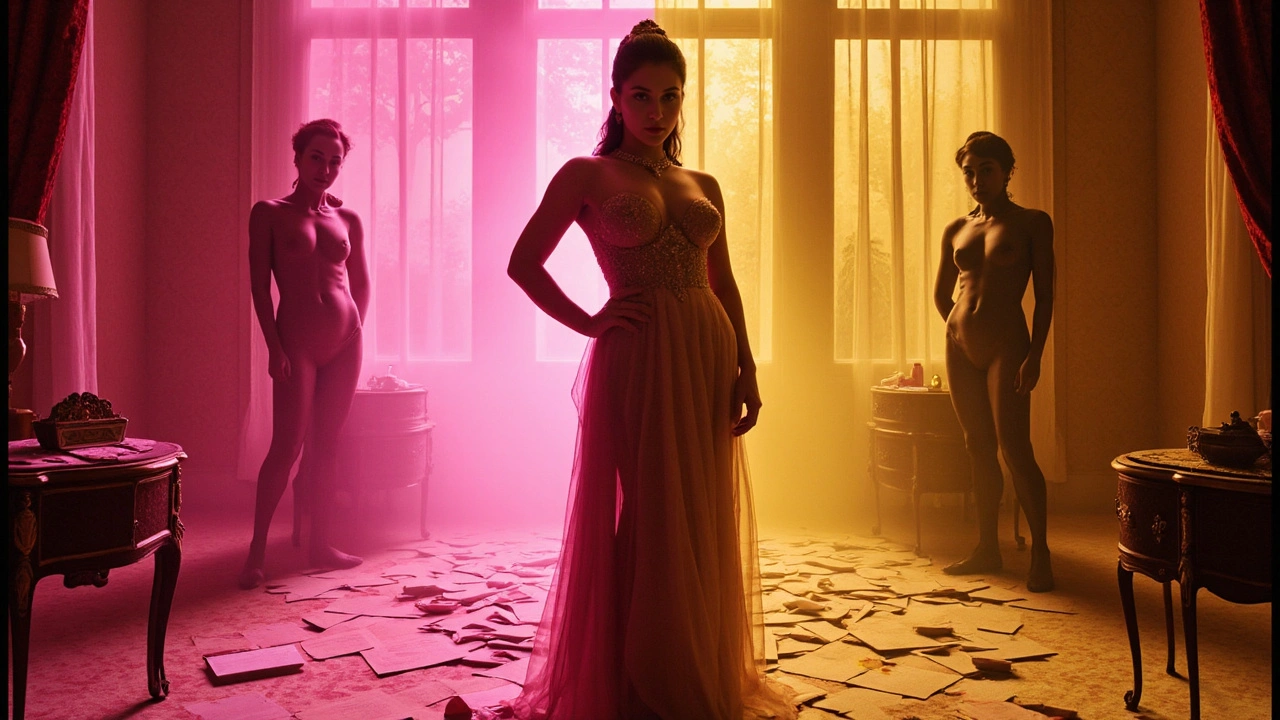Ever wondered if courtesan relationships were about real feelings, or just smart business? You're not alone. Plenty of people have debated this for centuries. The answer? It wasn't all hearts and flowers, nor just cold calculations. Most of the time, these relationships walked a fine line—think business arrangement with a big side of chemistry.
Courtesans knew exactly what they were doing. They were skilled at reading people, building connections, and making clients feel seen. But love? That wasn't always part of the deal. Sure, some got swept up in true romance, but many blended affection with ambition. It's like mixing work and pleasure—you can have both, but it gets complicated fast.
If you're looking to understand how attraction, money, and opportunity mixed together in these partnerships, it's worth seeing the big picture. Let’s dig into what drove these dynamic, and sometimes risky, relationships.
- Direct Answer: Love or Business?
- Key Points: What Really Drove Courtesan Relationships
- History and Context: The World of Courtesans
- Motives and Emotions: Untangling Love from Business
- Famous Examples and What We Can Learn Today
Direct Answer: Love or Business?
If you're picturing rich guys falling genuinely in love with clever courtesans and living happily ever after, slow down. Most courtesan relationships were really a mix of business and personal perks, with the business side usually coming out on top. It wasn’t an even split—money, power, and social influence often led the dance.
Courtesans offered companionship, attention, conversation, and sometimes a wild dose of excitement, but there was almost always a financial contract or expectation. No one paid a courtesan just for romance. Most felt—it’s about getting more than just what’s on the surface. The client wanted something he couldn’t get at home, and the courtesan wanted cash, gifts, protection, or a bump up in society.
That said, yeah, the lines did blur. There were famous affairs where genuine feelings popped up. Like Ninon de l’Enclos in 17th-century France—guys actually fell for her, and she picked lovers she liked, not just the highest bidders. Still, she made sure her lifestyle and status were taken care of. In Japan’s Edo period, oiran courtesans sometimes got close to clients, but social rules and money always mattered more than love.
To see how these motivations played out, check out this quick breakdown of notable historical cases:
| Courtesan | Era | Love Factor | Business Factor |
|---|---|---|---|
| Ninon de l’Enclos | France, 1600s | Genuine attraction possible | Social climb, financial gain |
| Veronica Franco | Venice, 1500s | Personal charm played a role | Needed wealthy, powerful clients |
| Cora Pearl | Paris, 1800s | Romance sometimes involved | Lavish gifts, fame, luxury |
| Oiran (Japan) | Edo period | Emotional ties rare | Strict contracts, high payment |
Keep in mind, in a time when women had few economic choices, being a courtesan wasn’t just a wild lifestyle. It was a smart way to get ahead. Love stories happened, but the main engine was almost always business, not fairy tales.
Key Points: What Really Drove Courtesan Relationships
You might think courtesan relationships were all about love—or totally about money. But honestly, it was rarely that simple. Here’s what actually fueled these connections, based on real facts and stories from history.
- Courtesan relationships usually mixed emotional and financial motives. Many courtesans provided conversation, style advice, and companionship on top of intimacy.
- Status mattered. Being seen with a famous courtesan could boost a man’s image in elite circles, while courtesans often gained wealth and security from these ties.
- Some relationships actually turned into exclusive commitments. Sometimes a wealthy patron would support just one courtesan for years—sounds almost like modern dating, except with contracts and property deals.
- Emotional attachment happened, but it wasn’t always mutual. Courtesans were trained to keep things professional while making clients feel special.
- Gifts, property, and even pensions were common. In 18th-century Paris, famous courtesans like Madame du Barry and Cora Pearl were known to receive mansions and yearly incomes from their lovers.
For a clearer picture, take a look at how these motives mixed and shaped common outcomes:
| Factor | Role in Relationships | Typical Example |
|---|---|---|
| Financial Gain | Main driver—courtesans needed money for lifestyle and security | Receiving gifts, apartments, or income |
| Status Boost | Both parties gained social clout from being seen together | Noblemen flaunting famous companions at parties |
| Emotional Attachment | Sometimes genuine romance, but usually mixed with strategy | A courtesan writing love letters while also negotiating gifts |
Bottom line: power and money were always present, but that didn’t totally rule out feelings. Courtesan relationships were more layered than most modern hookups or dating—feelings often existed, but the business angle was never far behind.

History and Context: The World of Courtesans
If you want to understand why courtesan relationships were never just love stories or simple business deals, you gotta start with how the system worked. Courtesans showed up in pretty much every major society—think Ancient Greece, Rome, China, Japan, and, of course, Renaissance Europe. But their roles always depended on the local culture and who had power and money at the time.
Let’s look at Renaissance Italy for a second. Being a courtesan could actually beat being stuck in a tough marriage or scraping by on your own. Courtesans here were known for being smart, stylish, and quick-witted. Some, like Veronica Franco in Venice, published poetry and hung out with artists and political bigwigs. They got paid for their time and company—sometimes way more than what the average worker made in a month.
In Japan, the oiran were a different kind of courtesan. These women were highly trained in music, dance, and even conversation. Shoguns and wealthy merchants would compete to be seen with them. Their reputation meant they could influence fashion and even trends at court.
- Courtesan relationships weren’t secret or hidden—they were out in the open and sometimes even part of the local economy.
- Payments covered not just intimacy but access to exclusive parties, interesting conversation, and a chance to connect with important social circles.
- Contracts or agreements were common. It kept things clear for everyone involved, especially when emotions or jealousy got mixed in.
Some of the most famous relationships from history—like French King Charles II and Nell Gwynn, or Tsar Nicholas II and Mathilde Kschessinska—weren’t about a classic boyfriend-girlfriend vibe. These couples balanced personal feelings with the perks (and risks) of being involved with people in power.
So, the world of courtesans wasn’t just about romance or money. It was a mix of ambition, social climbing, and real connection, all shaped by the rules of the place and time.
Motives and Emotions: Untangling Love from Business
Let’s get real—courtesan relationships weren’t simple crushes or just quick money grabs. The truth is, both sides usually had mixed reasons. Courtesans, especially in big cities like Paris or Venice, often depended on their connections for survival and a shot at a better life. But these bonds weren’t cold or robotic. Feelings did show up, even if nobody wanted them to get in the way of business.
If you check out famous cases, like Cora Pearl in 19th-century France, you’ll notice a pattern. She picked influential clients but sometimes got attached. In her memoirs, she talked about real heartbreak when deals ended or when she felt betrayed. Same goes for Veronica Franco in 1500s Venice—her poetry blends love, longing, and ambition, showing just how blurred the line got.
For clients, the motives were often just as tangled. Sure, they paid for company, but they also craved attention, understanding, or someone to listen. One count in Victorian England, for example, left detailed diaries saying he got emotional comfort from his favorite courtesan—almost like therapy before therapy was cool.
Here’s how it usually broke down:
- Companionship was a huge driver—many clients simply wanted someone smart and witty to talk to.
- Financial motives mattered for both sides. Courtesans sold more than affection—they traded in social access and even influence.
- Genuine feelings crept in, but there was always an eye on the stakes. Losing a client could mean losing stability.
- Competition among courtesans was fierce. Staying on top meant mixing business smarts with emotional skill.
Check out this quick comparison showing just how much motives could overlap:
| Motives | For Courtesans | For Clients |
|---|---|---|
| Financial Security | Very important | Less important |
| Love/Affection | Sometimes real | Frequently real |
| Status/Social Access | Key factor | Sometimes |
| Emotional Need | Can develop | Very common |
Bottom line: Even when things started all business, emotions had a knack for showing up. Sometimes those feelings got messy, sometimes they made connections deeper. But anyone in this world learned fast—mixing love and commerce always meant a few risks.

Famous Examples and What We Can Learn Today
Let’s get real. When you look up stories about courtesans, it’s clear: their relationships were rarely just about mushy feelings or straight-up money. They hung out with the rich and powerful because it made sense for both sides. Take Veronica Franco, a Venetian courtesan in the 1500s. She wasn’t just a pretty face—she wrote poetry, debated politicians, and advised noblemen. Most of her relationships started as business, but even she admitted sometimes real feelings crept in.
Another classic example is Cora Pearl, one of Paris’s top courtesans in the 1800s. She dated dukes, princes, and a bunch of high-profile men. Did she fall for some of them? Maybe, but when she wrote her memoir, she spelled it out: her main goal was financial security and social perks. Still, she kept a few favorites around for years. So those lines definitely blurred.
Check out this quick breakdown of famous courtesan relationships to see how business and love often overlapped:
| Name | Era | Key Relationship | Main Motive* |
|---|---|---|---|
| Veronica Franco | 1500s Venice | Noble patrons, poets | Business with personal respect |
| Cora Pearl | 1800s Paris | Duke de Rivoli, Prince Achille Murat | Mostly business, sometimes affection |
| Mata Hari | Early 1900s Europe | Army officers, diplomats | Status and funds |
| La Païva | 1800s | Wealthy aristocrats, Count Henckel | Business, marriage for lifestyle upgrade |
*Main Motive shows the most obvious purpose, but personal feelings often played a side role.
So, what can we take away from all this? Here are some tips if you’re fascinated by these connections or thinking about relationships where money and feelings mix:
- Don’t expect clear-cut boundaries. Even the pros couldn’t keep work and romance from mixing.
- Check your expectations. If you’re entering a relationship with mixed motives, talk honestly about what you’re both looking for.
- Respect and communication mattered a lot more than just gifts or titles. Most famous courtesans picked clients based on mutual respect, not just cash.
- If you want to learn from the past, recognize how smart and strategic these women were. They used their social skills, brains, and charm to gain independence when regular women often couldn’t.
The bottom line? In the world of a courtesan, business and pleasure mingled but didn’t always clash. And that mix is still something people try to figure out today.



